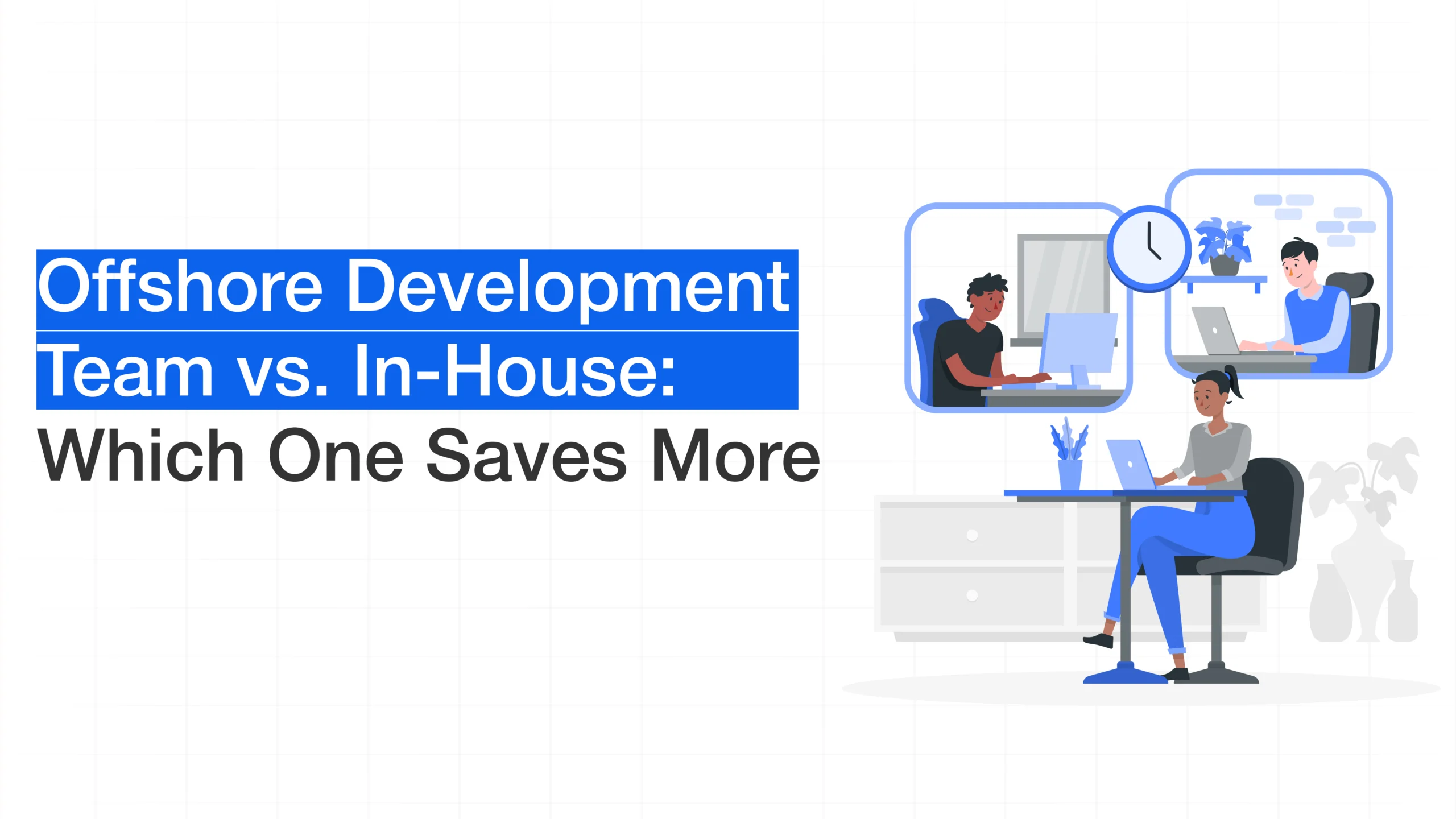The Rise of Smart Digital Ecosystems: How Businesses…
Technology has evolved faster in the last three years than…

At some point in time, every digital business has to select: should we build our team in-house or leverage offshore resources? One thing is sure; this is not concerned with the budget. It is a strategy.
At some point in time, every digital business has to select: should we build our team in-house or leverage offshore resources? One thing is sure; this is not concerned with the budget. It is a strategy. But here in 2025, all the companies, startups and enterprises have started to move forward and deliver flawlessly. Now everything is about value per dollar, speed per sprint, and quality per line of code. Who will really win – it comes to the offshore development team vs in-house debate.
Before we can talk about numbers, let’s define the playing field.
Here employees work on site or remotely, that is the hiring developers will be working full-time. The company’s culture, vision, and operations will integrate deeply.
An offshore team refers to hiring developers from another country—typically through a third-party vendor or dedicated team model. They’re not your employees, but they’re your product builders.
Control: More in-house. More flexibility offshore.
Cost: Typically, higher in-house
Speed onboard: Faster with offshore vendors.
Scalability: teams can scale up or down faster offshore.
Comparing in-house vs outsourced software development, context is king.
Cost Factor | In-House Team | Offshore Development Team |
Annual Salary (per developer) | $90,000 – $150,000 (USA/Western Europe) | $20,000 – $50,000 (India, Eastern Europe, LATAM) |
Benefits | 20–30% extra (healthcare, PTO, taxes, etc.) | Included in vendor contract (no additional cost) |
Infrastructure | Office space, hardware, software licenses | Handled by vendor (no infrastructure costs) |
Hiring Costs | Job boards, HR, onboarding delays | Fast onboarding with ready-made teams |
Management & Admin | Internal HR, payroll, training | Managed by vendor |
Communication Challenges | Minimal (real-time sync, shared culture) | Possible delays (managed with tools like Slack, Zoom) |
Estimated Savings | — | Up to 50–70% on direct development costs |
While in-house teams offer more control and cultural alignment, offshore teams deliver significant cost savings—especially when speed and scalability are key.
Let’s explore the softer (yet critical) dimensions that influence the decision.
“Offshore gives speed. In-house gives control. The smart choice depends on what your business needs more—now.”
Each model shines in different scenarios.
Choosing between in-house and offshore teams is a strategy not a binary
Why Hybrid Works:
With the right communication tools and workflows, hybrid models often outperform either model on its own.
Selecting the cheapest option is not good, while comparing an offshore development team vs in-house. In-house offers more control and alignment—if you can afford it and wait for it. Offshoring can save significant costs while accelerating timelines—if managed well.
Ask yourself: What’s our stage? What is at stake? Once you answer these yourselves, your views will be clear.
Decide with clarity—compare offshore and in-house development to scale your business the smart way.
Offshore development is generally 50–70% more cost-effective than in-house, especially when outsourcing to regions like India or Eastern Europe.
Common risks include communication gaps, time zone differences, and varying quality levels. These can be managed with clear documentation and collaboration tools.
Startups should opt for in-house development when handling sensitive data, building core IP, or requiring strong team collaboration.
Technology has evolved faster in the last three years than…
Technology is no longer just a supporting function—it has become…
Speed is not merely a luxury in the fast-paced tech…